Dr. Eric Clinical Trial
Can an iPad app increase condom usage amongst sexually active teenage boys?
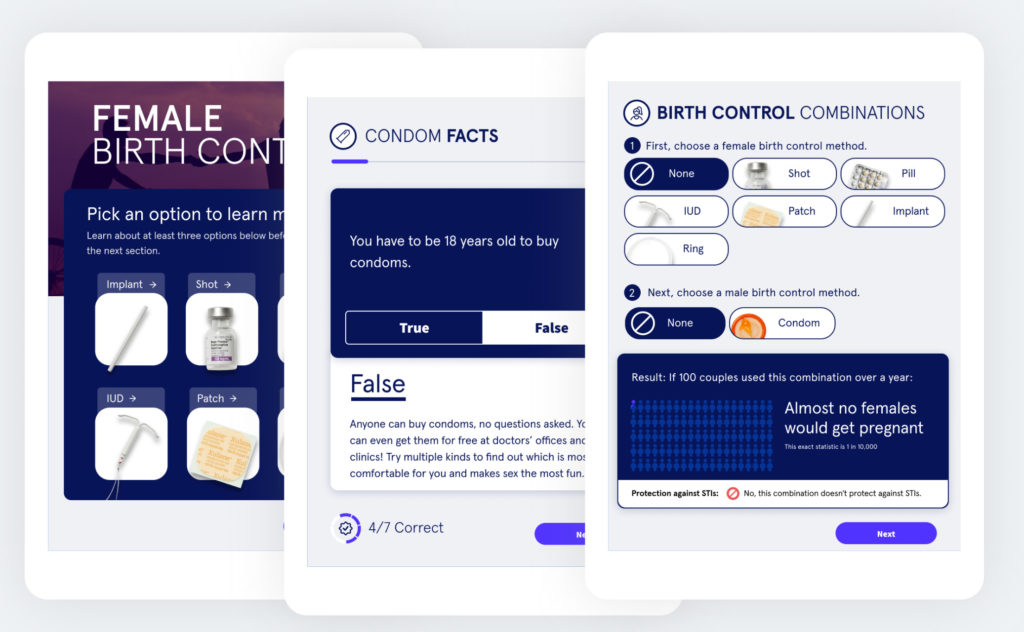
Services
UI, UX, Prototyping
year
2021
Prototype Link
No
About the Client
https://cuimc.columbia.edu
Dr. Lauren Chernick, an emergency pediatric physician and researcher at CUIMC – Columbia University Irving Medical Center, one of the premier research hospitals in NYC.
The Brief
The challenge was to convey sexual health information in a way that was not only accessible and engaging to teenage boys, but actionable in the truest sense: the action in this case being condom use. Since this can’t be tracked digitally, it would be self reported with surveys before and after the program. Based on their responses, users would also get weekly text messages for 10 weeks after using the program.
While the challenge was significant, we also had the unique advantage of being able to rely on scientific research as a part of our design practice. This allowed us to move quickly and confidently through Discovery, even though we were navigating a very difficult and controversial problem space. Dr. Chernick had previously run a similar study with teenage girls with encouraging results, called Dr. Erica (Emergency Room Interventions to improve the Care of Adolescents), validating the approach of educational interactive content followed with a text message campaign.
She also ran another study to understand why teenage boys do or don’t use contraceptives. This study used semi-structured interviews and thematic analysis to assess the qualitative feedback. These methods are extremely similar to how I would run early user interviews to assess product-market fit (but far more quantitatively rigorous). Additionally, much of the App content was structured according to Motivation Interviewing – an evidence-based counseling strategy used to encourage positive behavioral changes.
In addition to designing the app, we had to think about the off-screen experience. Modifying the behavior of teenage boys would be challenging in any setting; those who are in a hospital waiting room are often there with their own emergency, or with a friend or family member. As a user, they may be distressed, distracted or fatigued.
Discovery
Having already created an app for Dr. Erica, the client had a fairly detailed vision of the app in a deck, with written content and placeholder visuals for every page. After a series of Discovery interviews with Dr. Chernick and her team, I produced a journey map to visually represent the on- and off-screen experience for users, as well as the feelings and mindset of users.
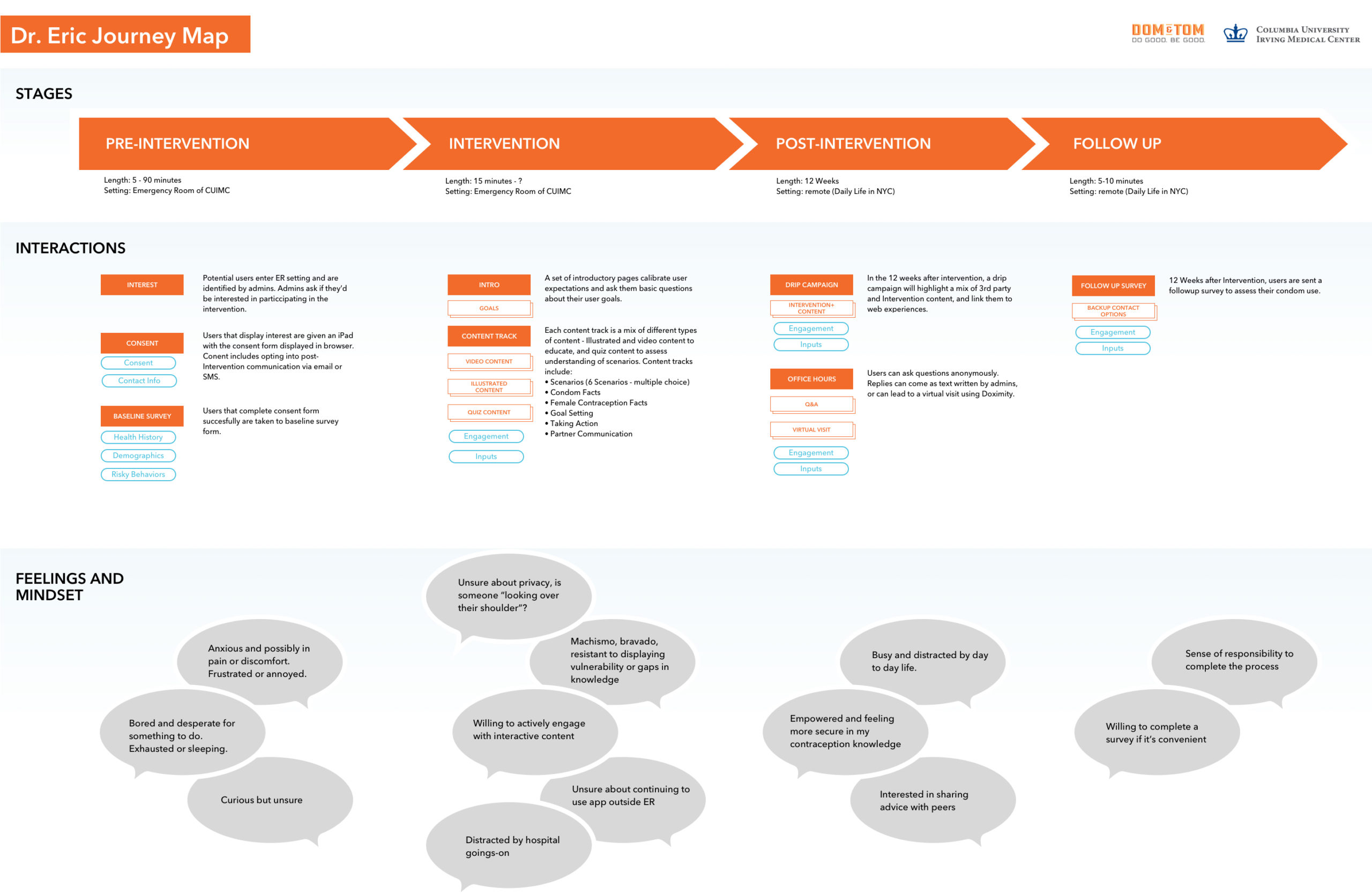
I then translated the content deck into a series of user stories captured in the spreadsheet shown below.
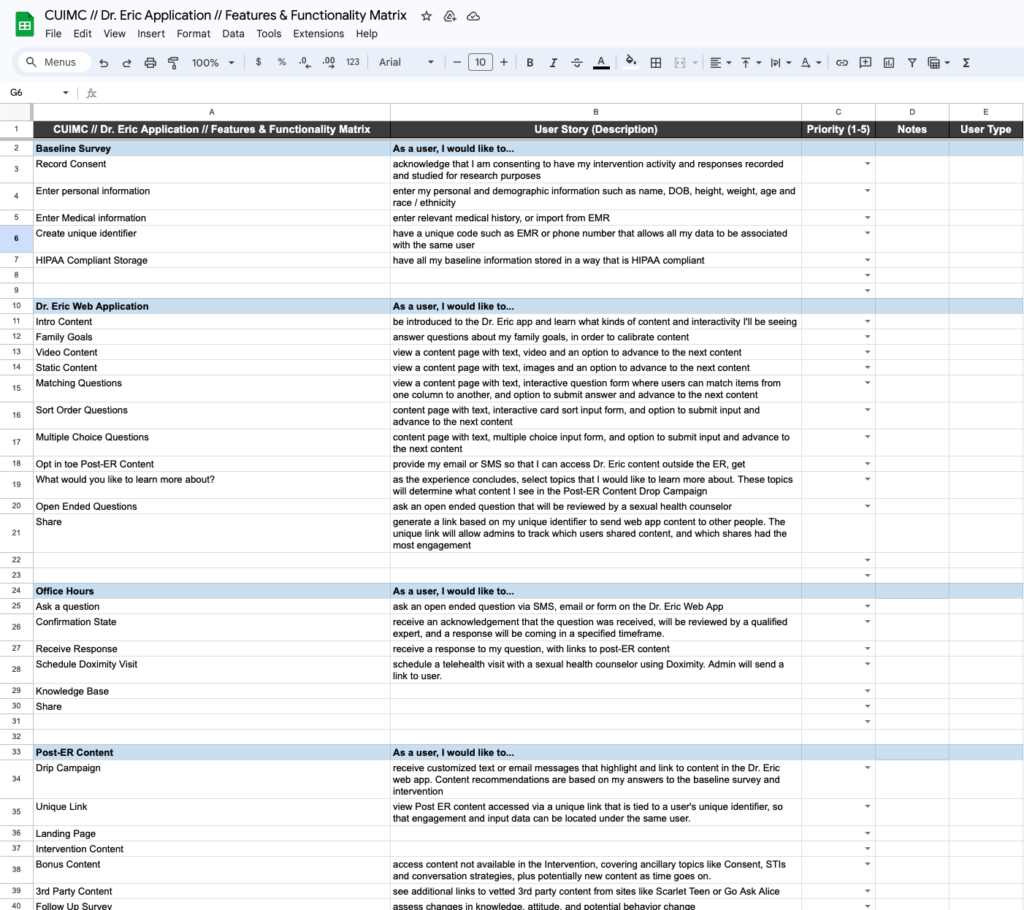
With such a content-heavy app, many screens use the same template. To accurately assess the number of unique designs we would need, I created an inventory of all the pages, based on the content deck.
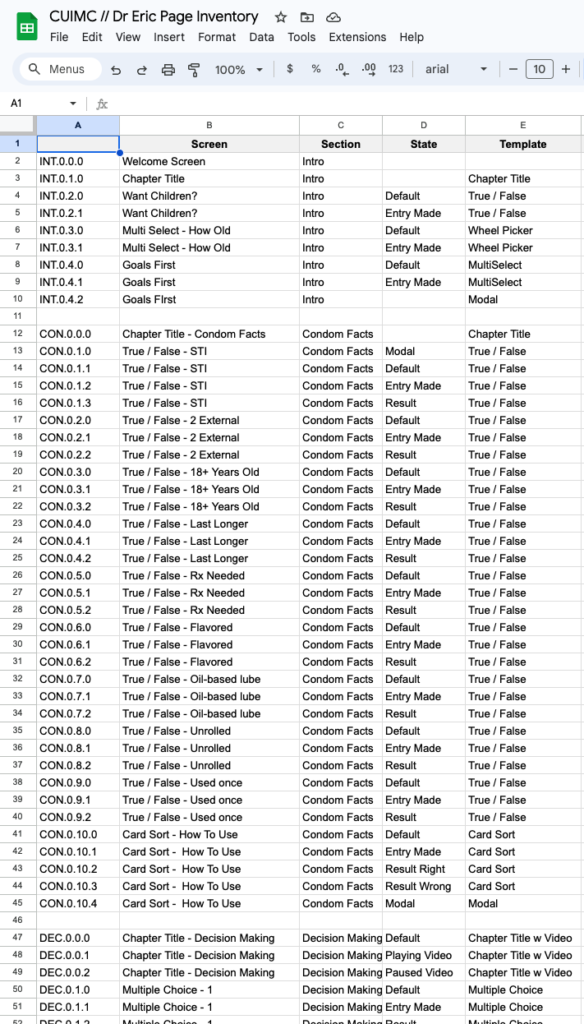
From this I determined there were only 8 templates and 5 unique pages. Easy, right?
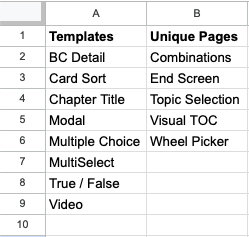
Design
Based on my Discovery work, the visual designer started laying out pages and creating Look & Feel options. With the assistance of Human Factors experts at CUIMC, two Look & Feel options were tested with a representative audience of teenage boys, and a clear winner was determined (option 2).
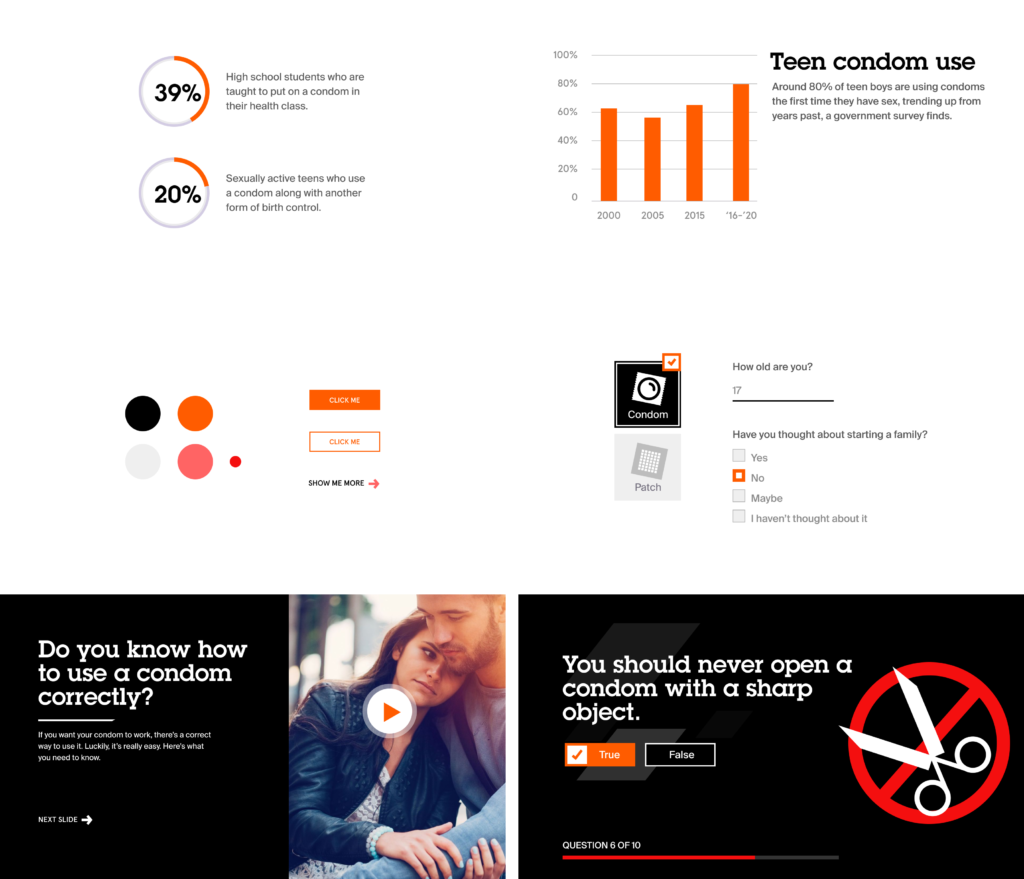
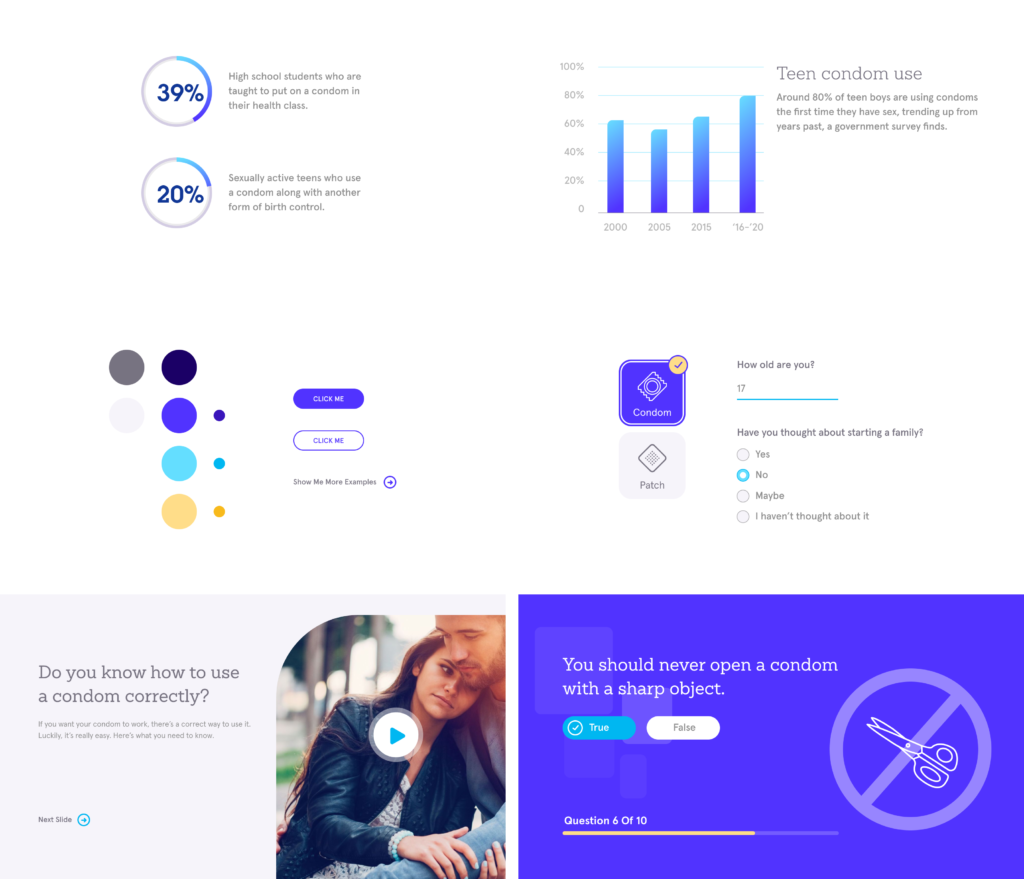
I worked collaboratively with the visual designer to apply styling and get content into all the pages. This was the first project I had done entirely in Figma, and I was utterly delighted to see we could finally have two people (or more!) working in the same file. Our stakeholders also had access to the Figma. We had a healthy dialogue in the comments, iterating on content.
About halfway through this process, our visual designer ghosted us! But Figma notched us yet another win there, because the files were all cloud based and I was able to continue working on the source file. This presented me with a great opportunity to learn Figma hands on! This could have been intimidating, but with the visual designs and wireframes already locked in I was able to keep the project on schedule.
The Dr. Eric App

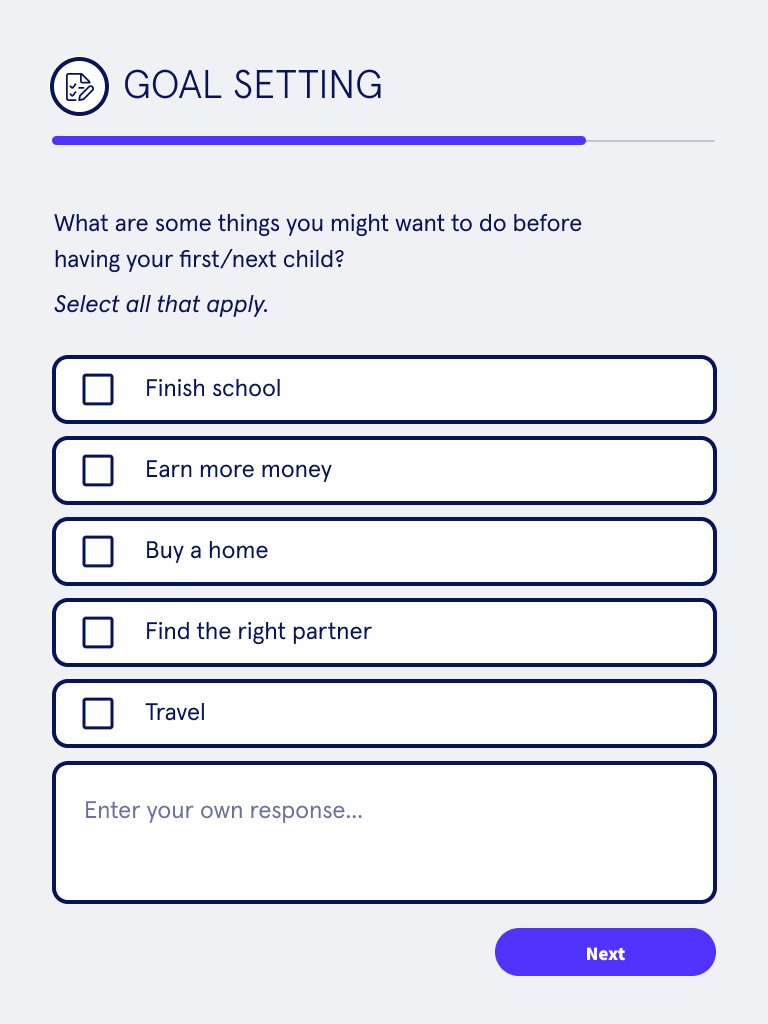
Part 1 of the app was a survey about user’s life goals, based on the Motivational Interviewing method.
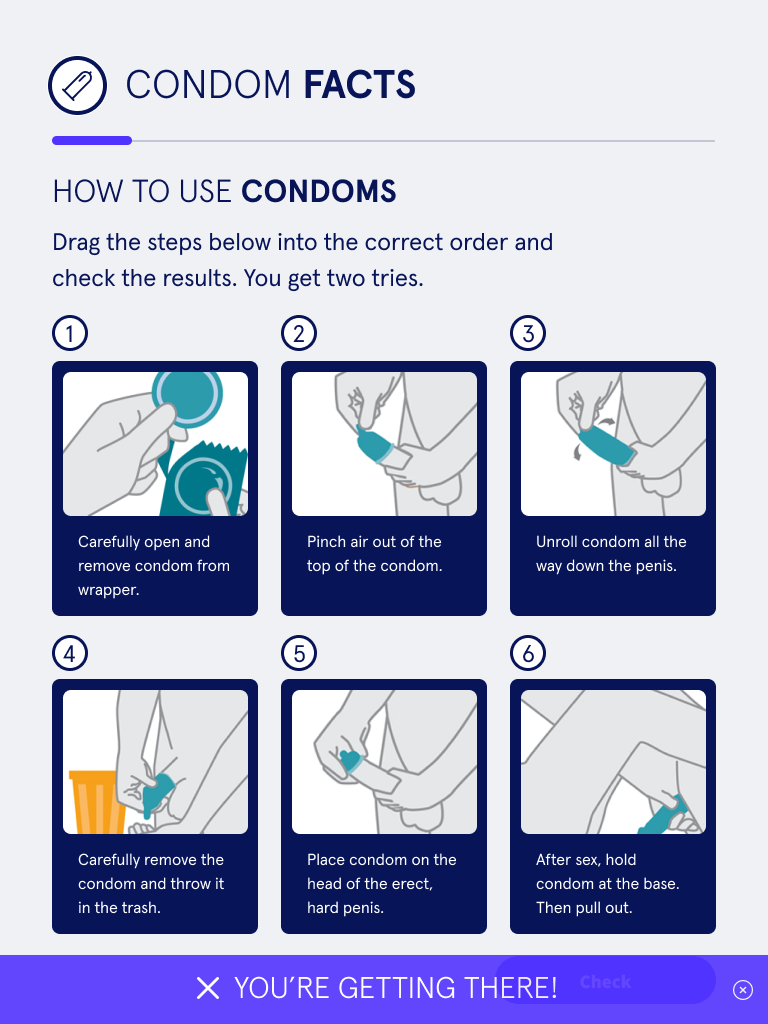
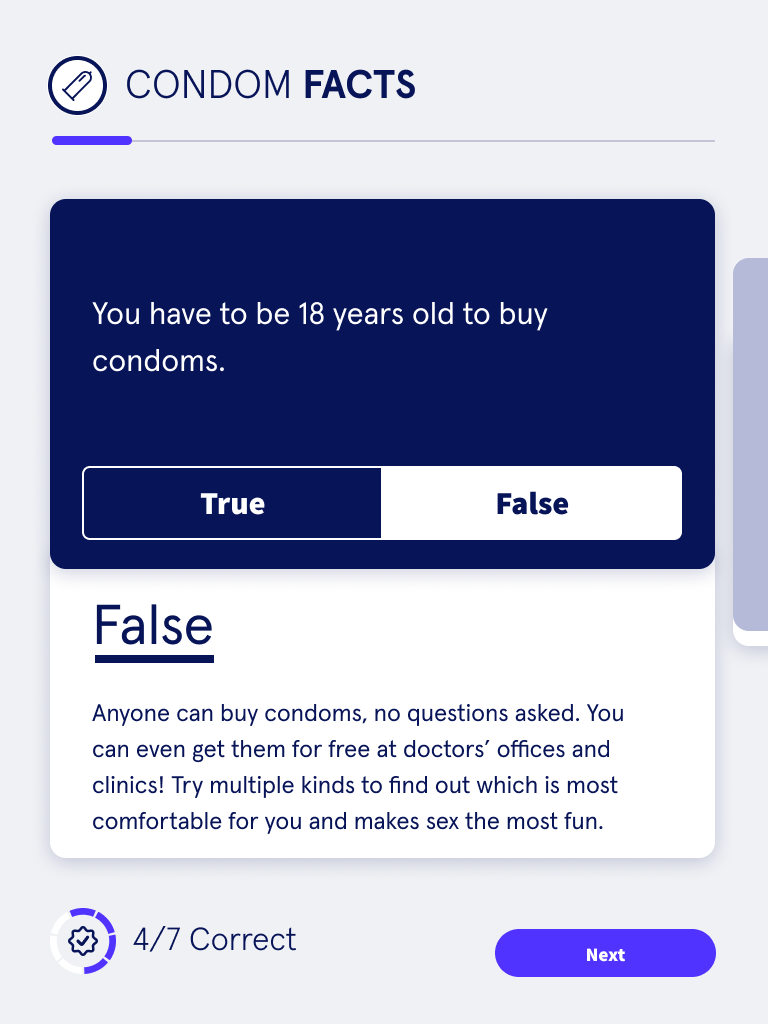
Part 2 was about basic condom education. A ‘put the cards in the right order’ game helps users to think critically about the steps to correct condom usage, and True / False questions help bust common misconceptions.

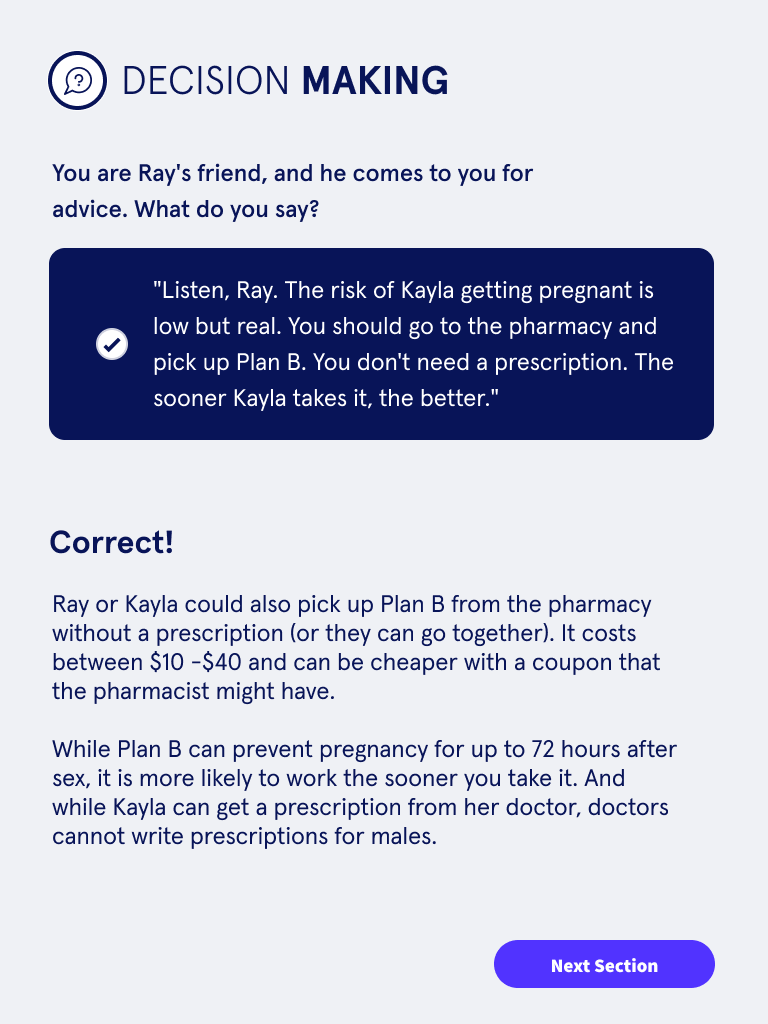
Part 3 presented narratives and asked the user to imagine how they would advise their friend. Many of the teen boys interviewed stated that they would like to be able to confidently advise their younger or less experienced friends on these matters.
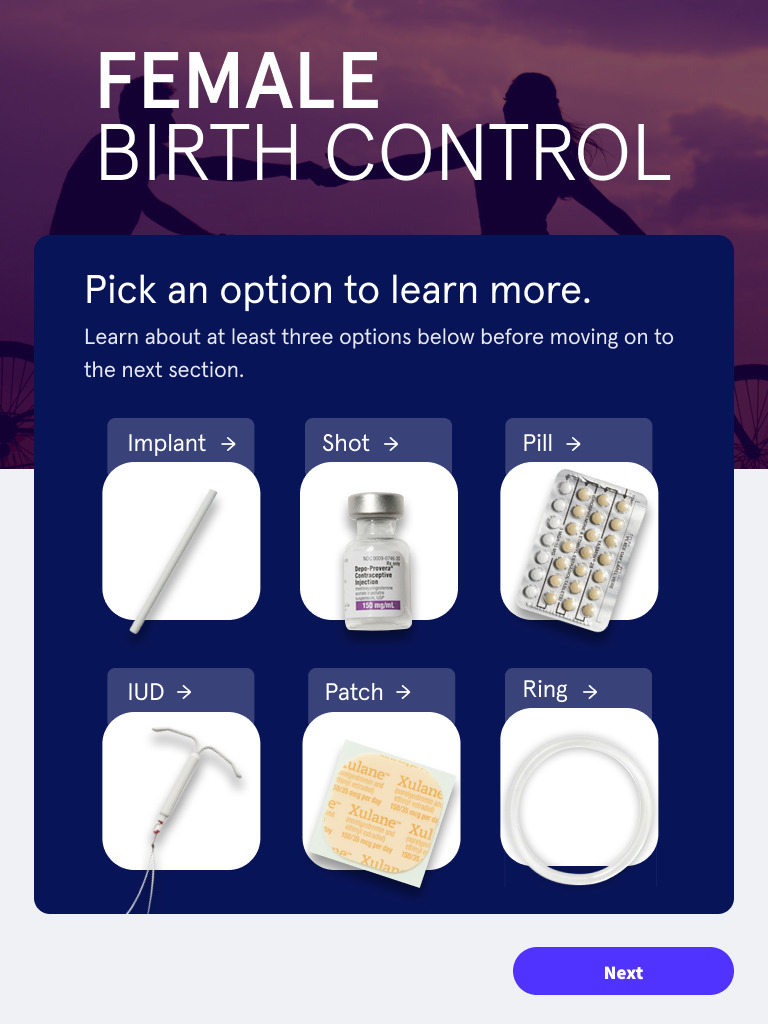

Part 4 focused on female birth control methods. This is an area where users had much less familiarity with even basic concepts, so it started with a “library” where they selected three methods to learn about. The Combinations screen showed how the using both a condoms and a female birth control method yields the best protection from unwanted pregnancy and STDs.
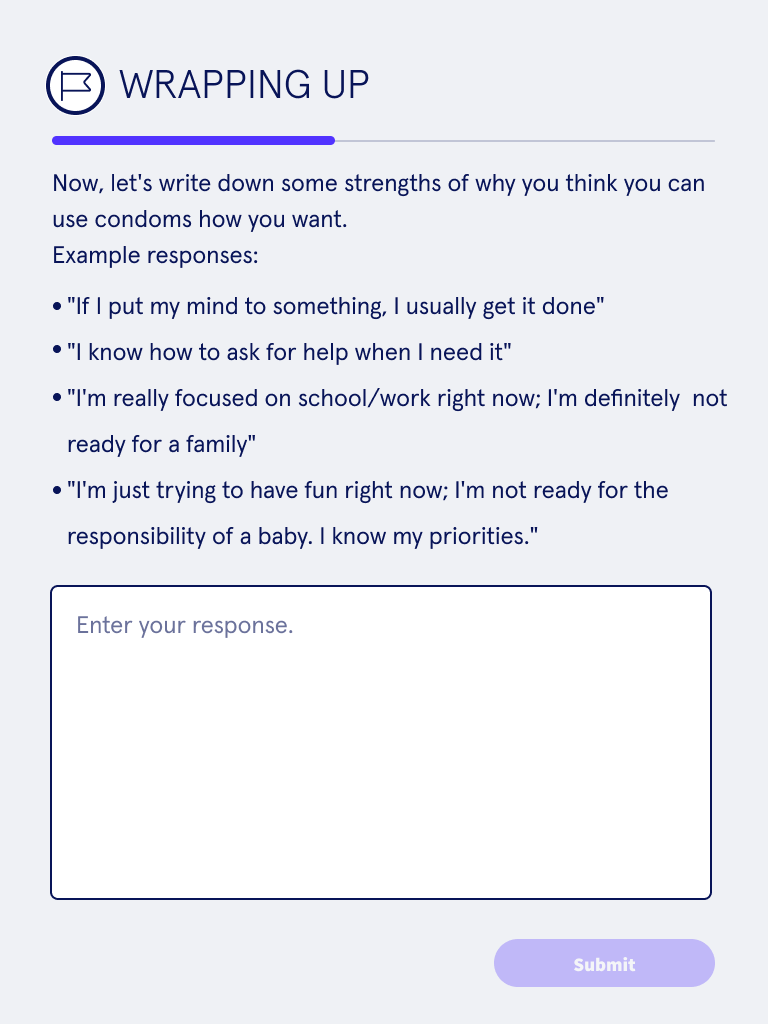
Finally, the last section asked users to state their reasons for using condoms, and connect them to the life goals they stated earlier. This is the core of the Motivational Interviewing technique; taking goals the user generated and using them as an incentive for behavior change.
Squidelephant Animation Studios
As we neared the end of the design phase, we still didn’t know where the video content would be coming from. With a very limited budget it was clear hiring an outside vendor wasn’t possible, and we would have to get creative. My project manager asked if I would be willing try creating some video content using a web based animation platform called Vyond. I was very skeptical, having never done animation professionally, but the premium license included a vast library of high quality stock animations and vectors. The tools were easy to use and very intuitive.
In just a few days, was able to create three videos based on scripts provided by the client. I also recorded the voiceover, and sourced royalty free background music. While these videos are not as high quality as what an animation vendor could produce, they were absolutely good enough for the situation, and achieved at a fraction of the cost.
Conclusion
The Dr. Eric study came to an end last year after enrolling 100 users. Dr. Chernick is in the process of writing the study paper, and I am helping with the parts that pertain to app design and development. When it is available to the public, I will link it here.
Update 1.20.24: The paper is now available as a preprint! Read it here.
“A User-Informed Phased Approach to Design a Digital Sexual Health Intervention for Adolescent and Young Adult Male Emergency Department Patients”
by Lauren Chernick, Mona Bugaighis, Victoria Daylor, Daniel Hochster, Evan Rosen, Rebecca Schnall, Melissa S Stockwell, David Bell